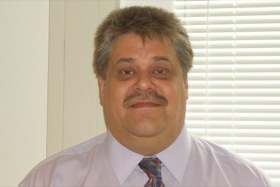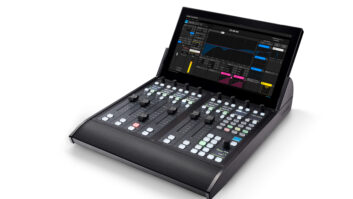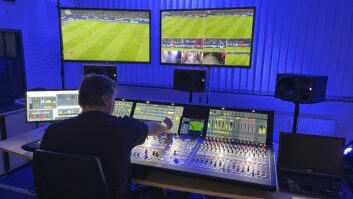Picture a week filled with overlapping races: a Formula 1 Grand Prix in Monaco, a MotoGP race in Valencia, and a World Rally Championship event in Finland. Each of these events, happening in different locations and time zones, requires a unique audio setup, and managing these complex requirements can be challenging.
On the ground at each race, microphones capture the engines’ roar, the crowd’s cheers, and the commentary from the pit lane. These microphones are connected to mixers, digital signal processors (DSPs), and communication systems, creating a robust on-premise audio network that can capture and process high-quality audio in real time. Technical staff controls and fine-tunes the audio broadcast onsite. Once the race is over, the challenge becomes breaking down the audio system, packing it, shipping the gear and technical personnel to the next race, setting everything back up, and testing before the next broadcast goes live.
Let’s pivot to another use case: broadcasting a live music festival. Like the racing scenario, microphones on the festival grounds capture the performances, while mixers, DSPs, and communication systems handle onsite audio processing, resulting in a great experience for festival-goers. But what happens if the concert promoters want to broadcast the festival worldwide, bringing the live music experience to fans who couldn’t attend in person?
In both these use cases, cloud-based production could seamlessly integrate various audio devices into a unified ecosystem, revolutionizing how broadcasts are managed. Beyond cost savings, this production method offers a valuable risk mitigation tool. Reducing the need for travel also reduces the associated risks, such as those posed by extreme weather events, political instability, or health crises like the Covid-19 pandemic.
This approach also broadens access to talent. Remote production makes it easier to include commentators, analysts, or guests who cannot be physically present at the broadcast location. They can contribute from wherever they are, making it possible to include a broader range of voices and perspectives in the broadcast.
Scalability is another key advantage. Broadcasters can easily scale up their operations to cover large, multi-venue events or scale down for smaller productions. This flexibility makes cloud production a versatile solution that can be adapted to a wide range of broadcasting needs.
One of the less obvious but equally important benefits realised with cloud-based production is that it reduces the physical footprint at the broadcast venue. By minimising the need for onsite equipment and personnel, remote production is less disruptive to the event itself, allowing for a more authentic and uninterrupted viewer experience.
Whether it’s overlapping motor racing events or a live music festival, cloud-based production offers a flexible, efficient, and scalable solution that can meet the demands of any broadcast. Audio endpoints can send synchronised, high-fidelity audio directly to best-of-breed or customer-preferred production software in the cloud, reducing the need for mobile studios and trucks. Audio can be distributed globally within the cloud, allowing different teams to use the same audio within multiple applications and locations to address different audiences, languages, and aspects of the production process. Source audio can be sent from remote sites directly to the cloud so mixing engineers can do their jobs from wherever they are located, again without the need to roll expensive outside broadcast truck deployments.
Many audio endpoints used at live events are enabled with the Dante audio-over-IP networking protocol and the recently introduced Dante Connect brings that Dante audio to the cloud. Specifically, Dante Connect allows broadcasters to rethink how they approach production by letting them take advantage of Dante audio devices anywhere in the world, create a cloud-based network of these devices, and then manage it from wherever their production staff is based. The ability to create efficient production workflows directly from the hundreds of thousands of on-premise Dante devices has the potential to revolutionize remote audio production.
Several popular cloud-based tools like Waves Cloud MX mixer, Audiotonix, and Riedel Communications’ Simplylive Production Suite are already capable of ingesting Dante audio, and many more are likely in the works. All of these facets make a compelling case for broadcasters to consider migrating toward cloud-based production workflows.
Whether it’s overlapping motor racing events or a live music festival, cloud offerings like Dante Connect offer production teams flexibility, efficiency, and scalability that can meet the demands of any broadcast. The future of broadcasting lies in the ability to manage complex, overlapping productions from a centralised location. Solutions like Dante Connect will lead the way in making this future a reality.







